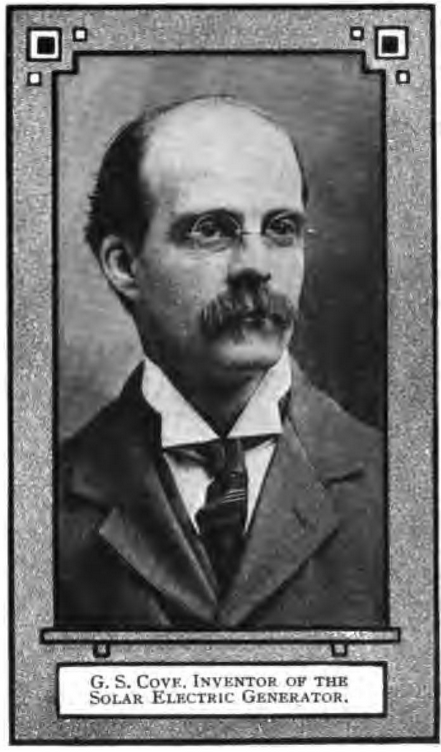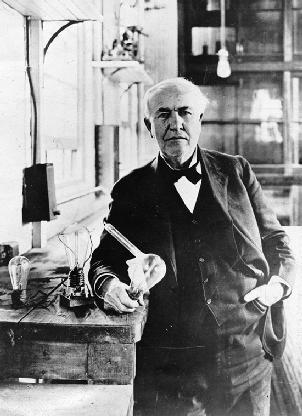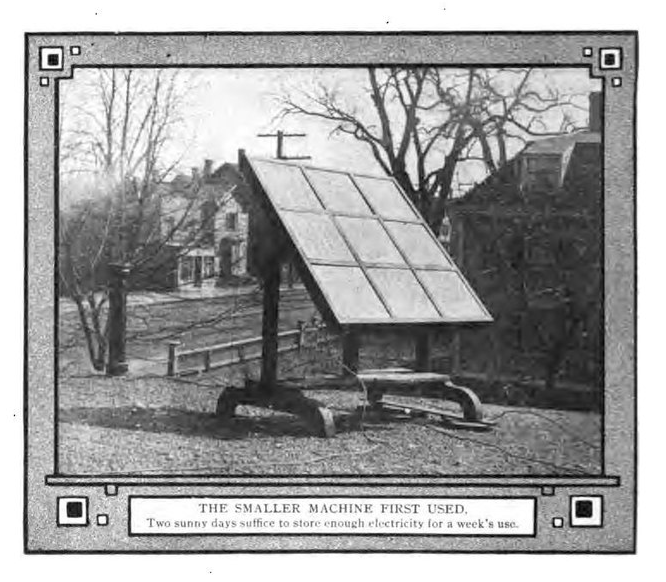George Cove: forgotten solar panel from 1910 much more durable
The inventor George Cove already developed a practical solar panel in 1910, but Edison probably killed his invention.
Contents
George Cove, inventor 40 years ahead of his time
According to the well-known history of the development of solar panels, the American Charles Fritts invented the very first solar panel ever, in 1884. This layer of selenium on a layer of gold had an efficiency of 1%. No progress was made after that, until Bell Labs researchers developed the very first silicon solar panels in the 1950s. With a sensational return, 5%.
Then the triumphal procession of the solar panel started, so that we now even have multijunction solar panels that achieve more than 40% efficiency.
This history is incomplete. A forgotten inventor, the Canadian George Cove, already succeeded in 1910 in generating electricity from solar energy with a radically different, much more sustainable design.
The George Cove solar electric generator
Cove began his remarkable career as an inventor with the presentation of his first “solar electric generator”. This took place in 1905 in the Metropole Building in the city of Halifax in the Canadian province of Nova Scotia. This caught the attention of the Americans. They then sent an expert who persuaded Cove to come to the US.
After several years of tinkering, he presented the second version of his solar generator in 1909. His model produced 45 watts of power on 1.5 m2, with an efficiency of 2.75%. An improved version even reached 5% efficiency. As much as the silicon panel from Bell Labs, more than forty years later. But how did this mysterious solar panel work?
“Error” became solar panel
Cove had no idea what he was doing because the scientific principles of the process were not yet known. So he was literally groping in the dark. He was initially under the impression that he was building a thermoelectric generator. This is a device that generates electricity from the temperature difference between hot and cold.

But this generator behaved very strangely. It gave much more power in the sun than when it was placed against a hot stove. It had everything to do with the material he used. Heat radiation also consists of photons, but with less energy per photon than light.
Solar panels work because they capture light and these light particles allow an electron to jump out of an electrical conductor across the “band gap”, a kind of barrier. These electrons flow back as electric current. You can use that current to charge a battery, for example. A thermoelectric generator also works similarly, but with a much smaller band gap.
Broadly speaking, Cove’s solar panel worked the same way. He accidentally built a thermoelectric generator with a much larger band gap due to the use of copper instead of the metal alloy alpaca and turned it into a so-called Schottky diode. It was therefore sensitive to high-energy light photons instead of the weaker heat photons. More details in Low Tech Magazine’s excellent article.
Potential for the future
In a solar cell you have an electron-rich (N) and an electron-poor (P) layer of semiconductors. These are scarce, expensive, often toxic and also difficult to recycle. TEGs, as well as Cove’s solar generator, work with a separate intermediate layer.
This type (Schottky diode) can be made from more common materials, such as nickel, bismuth, antimony and tellurium, and at lower temperatures. As Cove proved, of course, over a century ago. These are also neatly in separate blocks and instead of in a difficult to recycle layer stuck together.
A sad ending, possibly by Edison

Unfortunately, Cove didn’t get the chance to continue working on his revolutionary solar panel. In 1909 he was kidnapped by a group of men and threatened with death to stop working on his solar generator. The police refused to process his report. He was also accused of stock fraud. That earned him a year in prison. He focused on other projects for the rest of his life.
Some suspect that this was the work of the company of a “real American hero”, the famous inventor and businessman Edison. At the time, he was busy selling his electric generators on expensive coal and oil in New York. Of course, the very last thing his company could use was competition from a free energy source like the sun.
The Edison Illuminating Company of New York was notorious for this kind of mafia. Thus, Edison bought the patent of the best thermoelectric generator to eliminate this competing invention.
What if George Cove…
It’s always fun to think about what history would have been like if Cove had stayed in Canada, moved to a sunny, energy-poor country in Europe, or hadn’t gotten in Edison’s way in some other way. Would solar energy have made a breakthrough much earlier than now? Had we driven electric cars much earlier? Or on electric bicycles?



